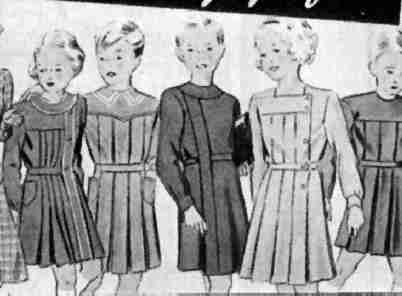
Figure 1.--French school smocks were initially farily standard, but by the late 1930s they came in many different styles for both boys and girls.


Figure 1.--French school smocks were initially farily standard, but by the late 1930s they came in many different styles for both boys and girls. |
We have noted many different variations in French smocks. I believe that the smocks commonly worn from the 1870s through the 1920s were almost all back buttoning smocks. These smocks buttoned straight down the back. French boys have since worn many styles of smocks, including back buttoning, side buttoning, and front buttoning. The front buttoning smocks sometimes had the buttons set somewhat to the side rather than down the center. I belive that smocks for boys and girls were intially quite similar, if not identical. I'm not sure why this back buttoning style was adopted as it made it difficult for boys to put them on and take them off. It made some sence for younger boys as it was easier for mother to help them dress, but it made it difficult for even older boys to put then on or take then off by themselves. Beginning in the 1950s, front buttoning smocks became increasingly popular for boys, although some boys still wore the back buttoning style. The back buttoning style, however, was still widely worn by girls. The three basic types of school smocks deal with how the smock closed. The French had different word to describe these smocks.
We have noted many different variations in French smocks. I believe that the smocks commonly worn from the 1870s through the 1920s were almost all back buttoning smocks. We have still limited information on how styles have changed over time. Our information on early school smocks is especially limited. These early smocks are believed to be almot all back buttoning smocks that buttoned straight down the back.
The three basic types of school smocks deal with how the smock closed. French boys have since worn many styles of smocks, including back buttoning, side buttoning, and front buttoning. The front buttoning smocks sometimes had the buttons set somewhat to the side rather than down the center. I belive that smocks for boys and girls were intially quite similar, if not identical. I'm not sure why this back buttoning style was adopted as it made it difficult for boys to put them on and take them off. It made some sence for younger boys as it was easier for mother to help them dress, but it made it difficult for even older boys to put then on or take then off by themselves. Beginning in the 1950s, front buttoning smocks became increasingly popular for boys, although some boys still wore the back buttoning style. The back buttoning style, however, was still widely worn by girls.
The French had different word to describe these smocks. The words are in part symantical and reflect changes in the language over time. Other terms refere to actual different types of smocks.
The word "blouse" has several meanings. It can be used as in English for a shirt-like garment. It is also commonly used for smocks like lab-style smocks closed in front of the body. This is a term mean smock in general, for school, work, men, and women. This word isn't used concerning specifically childrens or school smocks.
Similar to the cardigan sweater as used in English. I didn't even know this word was used for smock/blouse in 1966. Undoubtedly it was to renovate the concept of blouse which surely sounded old-fashioned to the young people of this era.
I have noted "sarrau" used for smock, but am unsure as to just what type of smock is meant.
Commonly closed at the back of the body. This was the most common word used for a child's smock and a school smock. Although normally used toi describe a back-buttoning smock, as the term became so associated with school smocks, it is now also used for he front buttonng smocks which have begun more common than the back buttoning smocks.
HBC has noted a variety of stylistic elements observed with French smocks. One of the most important is the color of smocks, but there are many different elements associated with French school smocks which come in many highy varied forms. Most smocks, except for gingham smocks were solid colors. A few had detailing of various forms. Usually the detailing was some kind of printed checked or gingam material across the front or around the collar to contrast with the solid colored smock. French boys do not appear to have commonly worn large white collars and bows like Itlalian boys. We have noted Belgian school boys with wide white Eton collars and floppy bows during the 1910s. We have not seen this style being commonly worn by French boys, but do not know for a fact that it was not. I have noted French school smocks in a wide variety of lengths. Some appear to be quite short, almost like a shirt others are quite long extending below the knees.
